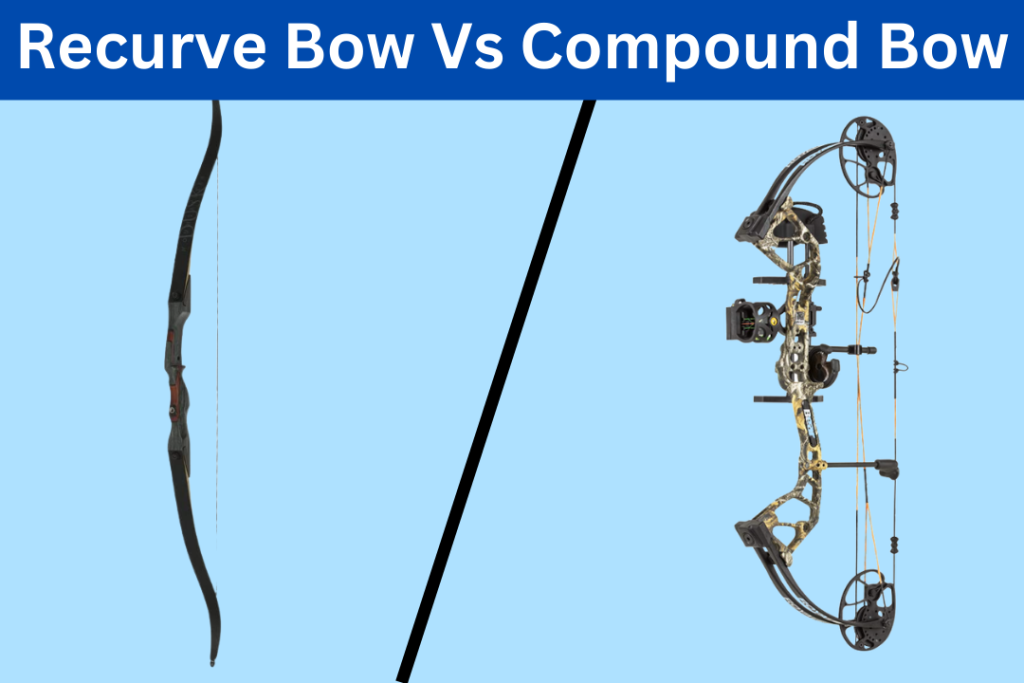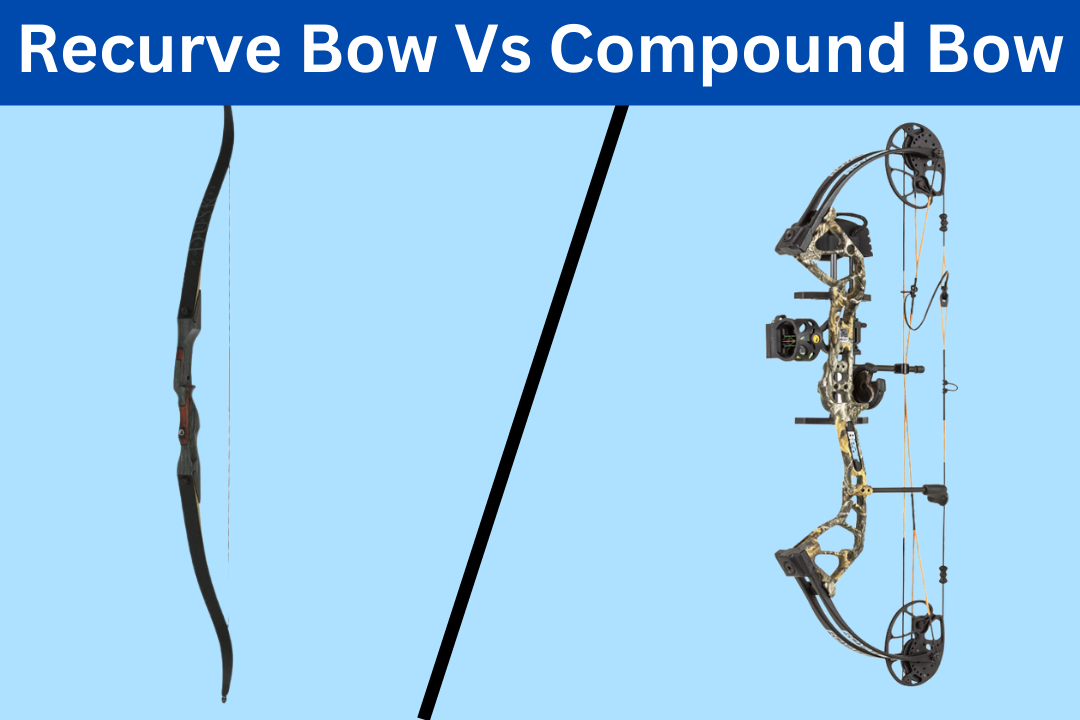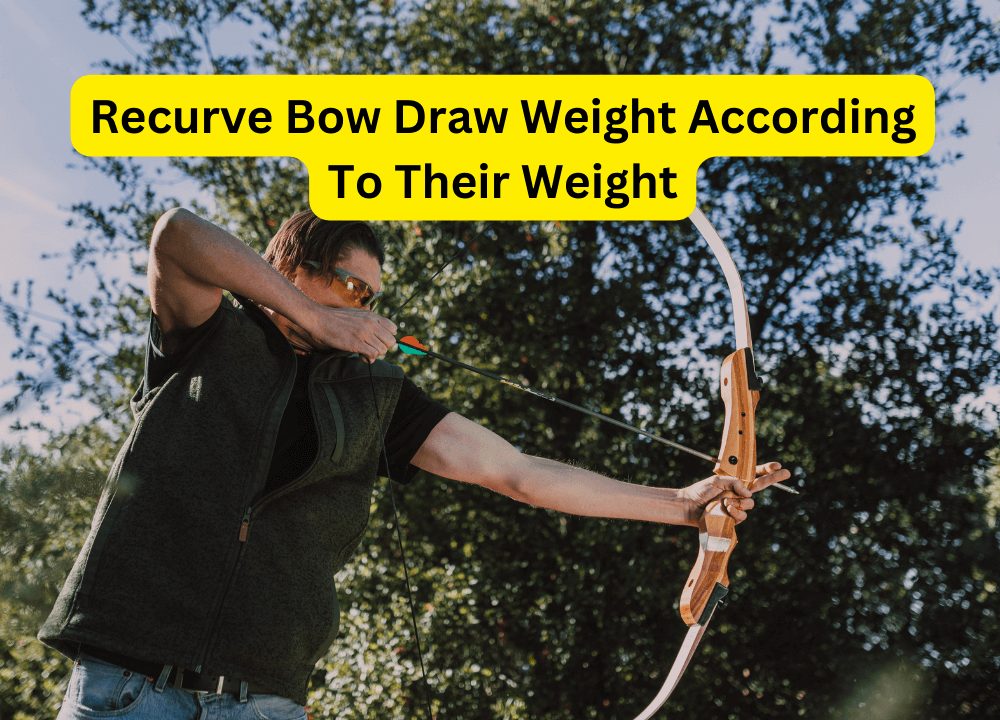
Are you new in archery and want to clarify your ambiguities while selecting the best choice? Most of the archer players or hunters need to clear their thoughts. To clear up your thoughts, you must understand their key differences and similarities between recurve bow vs longbow. Knowing these key comparisons will give you much confidence to find the best one.
We are giving here a complete overview of recurve bow vs recurve bow. How does it function? How do these two operate? So, without further ado, let’s dig into it.
RECURVE BOW VS COMPOUND BOW – Key Differences & Similarities
So, here are some of the key differences and similarities which are given here to extract the final conclusion between the recurve bow vs compound bow.
1- Accessories & Adjustability Differences :
A riser of a bow accommodates various attachments. Both recurve bows and compound bows have a riser. The riser enables sight, an arrow rest, a quiver, a stabilizer, string silencers, and limb dampeners to be attached to the bow.
Using a bow press we can adjust the draw weight and draw length of some compound bows. This process modifies the location of the cams. Some compound bows are available in the market, like the Diamond Infinite Edge, which allows you to change the draw length without using a bow press.
To raise and decrease the power of a recurve bow, you need to buy several kinds of limbs. A bow with only one set of limbs built will only have one power range. Although you can under-draw a recurve bow to make it shoot an arrow with less force, it will only result in poor performance and technique.
2- Availability, Size & Weight Differences
On the websites of the best manufacturers, you may find both sorts of bows in plenty. The compound bow is the hunter’s preferred model. Hunting is a popular sport in the USA and other countries, which is why a wide variety of compound bows are available more than conventional recurve bows.
A compound bow is much smaller and has the same power as a recurve. From the bottom limb tip to the upper limb tip, a compound bow may roughly be half the size of recurve bow.
Nowadays, takedown recurves bows predominate in terms of portability. We can detach the limbs and separate them into the riser, top, and bottom limbs, using knob screws. It is not the case for a compound bow.
Comparatively speaking, a compound bow requires more work to assemble than a recurve. Although the recurve bow is large enough, once the cams, stops, extra string, and the thickness of the riser to handle the strain come into account, you typically end up with a compound bow that is heavier than a recurve.
3- Differentiation between Cost & Power
Due to the study conducted by bow researchers to make compound bows intuitive and the increased number of components that enhance the performance of compound bows, compound bows are more technologically advanced.
The highest quality bows available for draw weights is about 70 lbs. With the bow, anyone can do anything they want with 70 lb of force.
In an ideal situation, with ideal circumstances and measurements, a 70-pound compound bow should outperform a 70-pound recurve bow when pulled to the correct length and weight of the arrow. The compound system of string and cams is more effective at repelling arrows and other projectiles than each of them alone.
4- Aiming & Maintenance Differences
You hold back 10 lbs of pressure while shooting a 70 lb composite bow with a 70% let-off. You must grip and aim with 70 lbs of force pressing on you while using a 70 lb recurve bow pulled to the point when the limbs are exerting 70 lb of force. It is easy to aim at the target while using a compound bow.
Recurve bows are simple to re-string manually and are unquestionably the winner. If you have a takedown bow, you may buy another limb and bolt them on to repair a damaged limb on a recurve bow.
If the string on your compound bow snaps, you’re usually left with a useless bow. A compound bow is more difficult to fix since an expert at a pro shop can disassemble the bow. A compound bow has more moving components than a simple bow meaning there are more potential problems.
Similarities Between a Recurve And Compound Bow:
This one is difficult to predict. Both limb dampeners and string silencers may be installed on a compound or recurve to reduce the noise a shot makes. You would anticipate both bows to be silent if it is correctly tuned and you’re shooting an arrow that is precisely the perfect weight for the strength of your bow.
Today, a variety of materials are used to build both sorts of bows. Recurve bow risers can be composed of laminated wood, carbon, or aluminum; compound bow risers are typically composed of carbon or aluminum. Both types of bows use comparable wood laminations for their limbs.
Frequently Asked Question:
Are recurve bows or compound bows better for beginners?
Recurve bows are easier to operate. It is easy to assemble and disassemble, making them a good choice for beginners.
What is the disadvantage of a compound bow?
A compound bow’s drawback, for those seeking a more traditional experience, is that it has a more contemporary feel. Additionally, it implies additional equipment and expertise for stringing, tuning, and maintaining your bow.
How far is the Compound Bow range?
In a typical competition, archers can fire up to 70 meters for recurve bow and 50 meters for a compound bow.
Which one Do you Need – Recurve Bow Vs Compound Bow:
Recurve bows are simply longbows with the points curving away from the archer.
Compound bows include “cams” that resemble wheels on either end. This basically means that the cams take over and handle the labor-intensive lifting for you once the string is roughly halfway or more dragged back. This decrease in draw force is referred to as “letting off.”
So Finally, which type of bow you are searching and then selecting for yourself totally depends on your hunting & archery experience, the way you play and your hunting style. Normally bowhunting is difficult but having the high chances of success. We prefer compound bows for an energetic and true sports person who wants to upgrade their skill level.
Although recurve bows are the most common choice for novices to begin, owing to their simplicity, compound bows are still a fantastic choice! Choose a bow that best compliments your shooting style by trusting your intuition. If you have a traditional shooting style, buy a recurve bow. It is cheap, lightweight, and easy to assemble and disassemble. If you want to benefit from technology, then you must purchase a compound bow.





